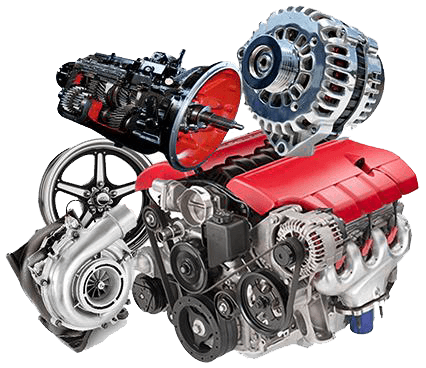Budget-friendly Opel Corsa Engine Options for Your Budget
Budget-friendly Opel Corsa Engine Options for Your Budget
Blog Article
Exploring the Inner Functions of a Compact Car's Engine System
As vehicle drivers, we typically take for provided the intricate processes that happen within the confines of our automobile's engine system. In this expedition of a small lorry's engine system, we will certainly unravel the internal functions of this mechanical harmony, dropping light on the enigmas that drive us ahead on our daily journeys.
Combustion Process Introduction
The burning process in a compact car's engine system is an important mechanism that successfully converts gas right into energy to power the automobile. This process occurs within the burning chamber of the engine, where gas and air mix, fire up, and produce controlled explosions. The combustion process includes 4 primary stages: intake, compression, exhaust, and power.
Throughout the consumption stage, the piston relocates downward, attracting in a mixture of air and fuel into the combustion chamber. The next phase, compression, involves the piston relocating upward, pressing the air-fuel mix to enhance its effectiveness. Subsequently, in the power phase, the ignition system sparks the pressed blend, resulting in a rapid development of gases that requires the piston back down. This descending movement creates the power required to drive the car. In the exhaust stage, the scorched gases are removed from the burning chamber through the exhaust shutoff, preparing the chamber for the following cycle. This cyclic combustion procedure is basic to the procedure of a compact automobile's engine system, making sure effective energy conversion for propulsion.
Piston and Cylinder Interaction

The piston's exact fit within the cyndrical tube is important for keeping optimal compression and protecting against power loss throughout combustion. Limited clearances between the piston and cylinder walls make sure reliable securing, allowing the piston to move efficiently without permitting gases to leak past. Proper lubrication is also vital to minimize rubbing and use between these elements, improving long life and performance.
Additionally, the design and materials made use of in producing the piston and cyndrical tube impact engine performance and durability. Modern engines frequently use lightweight yet resilient materials like light weight aluminum alloys for pistons and cyndrical tube linings to decrease inertia and boost thermal effectiveness. Overall, the unified communication between the piston and cylinder is fundamental to the engine's capability and overall efficiency.
Gas Shot System Performance
Fuel shot systems in portable car engines play an essential role in specifically delivering fuel to the combustion chamber for regulated and efficient ignition. The gas shot system works by infusing gas right into the burning chamber at the optimum moment throughout the engine's operation (opel corsa engine). This precise timing ensures that the gas blends uniformly with the air for appropriate burning, bring about boosted gas efficiency and minimized discharges
There are primarily 2 sorts of gas injection systems utilized in small lorry engines: port fuel shot (PFI) and direct fuel injection (DFI) PFI systems inject gas right into the consumption port prior to the intake shutoff, while DFI systems infuse fuel straight into the combustion chamber. Both systems have their advantages, with DFI offering far better gas atomization and PFI providing a much more cost-effective option.
Comprehending Engine Cooling Systems
Efficient procedure of a portable car's engine depends heavily on the performance of its cooling systems. The air conditioning system in a compact car normally consists of several elements working together to manage the engine temperature level. Understanding these engine cooling mechanisms is vital for maintaining the efficiency and durability of a compact vehicle's engine system.

Exhaust System Parts Explained
The ideal functioning of a compact vehicle's engine cooling systems depends on a complementary system understood as the exhaust system, which makes up various important components for guaranteeing reliable exhausts and read this engine performance. visit this web-site The exhaust manifold gathers exhaust gases from the engine's routes and cyndrical tubes them to the catalytic converter.
One critical component of the exhaust system is the oxygen sensor, which checks the oxygen degrees in the exhaust gases to help regulate gas consumption and guarantee ideal engine efficiency. opel corsa engine. In addition, the resonator might be existing in some exhaust systems to minimize sound levels. Generally, the exhaust system plays a vital role in preserving engine efficiency, reducing damaging discharges, and ensuring a quieter driving experience for small car owners

Verdict
To conclude, the small car's engine system is a complex mix of components that interact to help with the combustion procedure, transform fuel into energy, and expel waste gases. Understanding the inner operations of the engine system, including the piston and cylinder communication, fuel injection system, engine cooling mechanisms, and exhaust you can check here system elements, is vital for keeping ideal efficiency and performance of the car.
The combustion process in a small lorry's engine system is a vital device that successfully transforms fuel right into power to power the automobile.Gas injection systems in portable lorry engines play a critical role in exactly supplying gas to the burning chamber for regulated and reliable ignition.There are largely two types of fuel shot systems utilized in portable automobile engines: port fuel injection (PFI) and straight fuel shot (DFI) Comprehending these engine cooling devices is crucial for keeping the efficiency and durability of a portable car's engine system.
The ideal functioning of a small lorry's engine cooling mechanisms depends on a corresponding system recognized as the exhaust system, which consists of different important components for making certain reliable discharges and engine performance.
Report this page